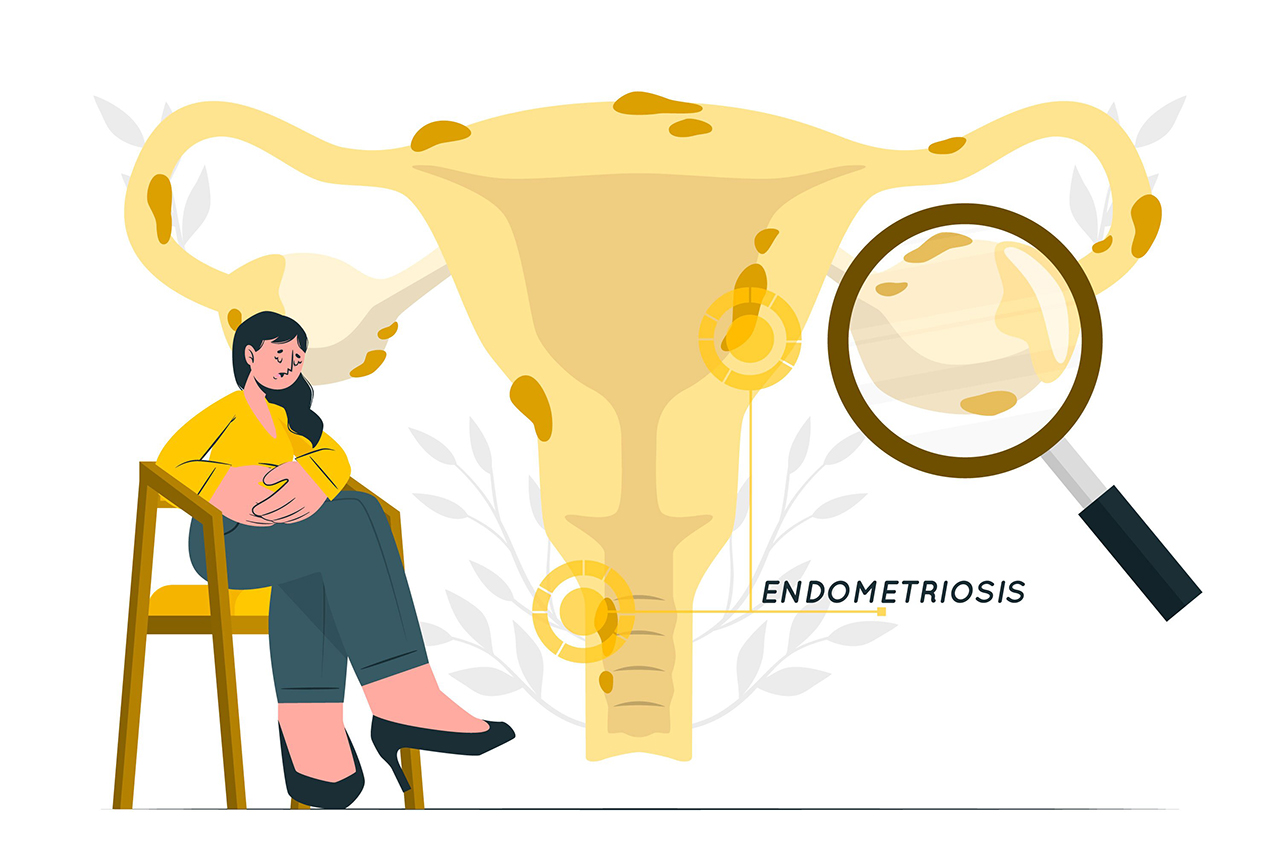Endometriosis is a chronic and often painful condition where tissue similar to the lining of the uterus grows outside the uterus. It affects an estimated 10% of women of reproductive age worldwide, translating to approximately 176 million women globally. This condition may cause severe pelvic pain, especially during menstruation and may lead to complications such as infertility and increased risk of ovarian cancer. The societal impact is significant, as it affects quality of life, mental health and productivity, leading to substantial healthcare costs and lost workdays.
The exact cause of endometriosis remains unclear, but several theories exist. One prominent theory is retrograde menstruation, where menstrual blood flows backward through the fallopian tubes into the pelvic cavity instead of leaving the body. Other contributing factors may include genetic predisposition, immune system disorders and hormonal influences. Common symptoms include chronic pelvic pain, painful periods (dysmenorrhea), pain during intercourse and heavy menstrual bleeding. Additionally, some women may experience gastrointestinal symptoms such as bloating, constipation or diarrhea, particularly during their menstrual cycle.
Diagnosis typically involves a combination of medical history evaluation, physical examinations and imaging techniques such as ultrasound or MRI. The definitive diagnosis is usually made through laparoscopic surgery, where a small camera is inserted into the pelvic cavity to identify and potentially remove endometrial tissue. While there is no known cure for endometriosis, management strategies include pain relief medications, hormonal therapies and surgical options to remove the endometrial growths. Preventative measures are limited but maintaining a healthy lifestyle, managing stress and seeking early treatment for menstrual problems are beneficial.
In conclusion, endometriosis is a complex condition with significant implications for women's health worldwide. Awareness of its symptoms and early intervention improve health outcomes and quality of life for those affected. Continued research is essential to better understand its origins and develop effective treatments.
